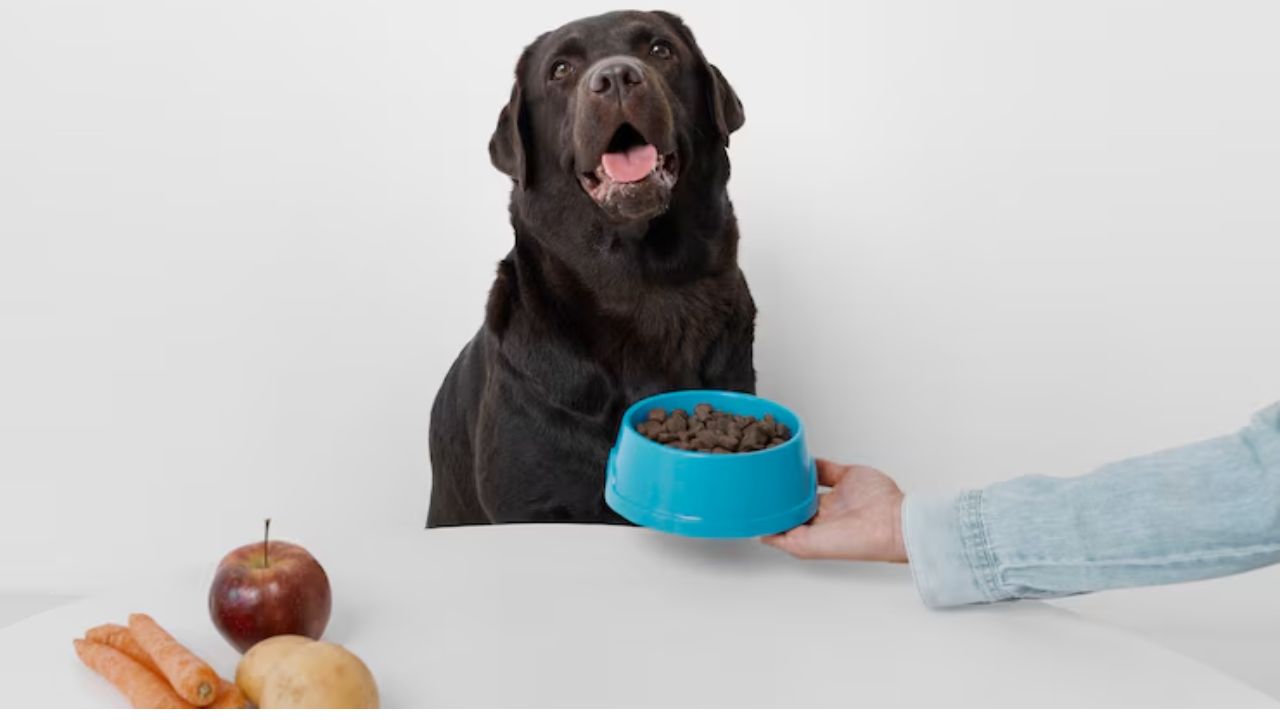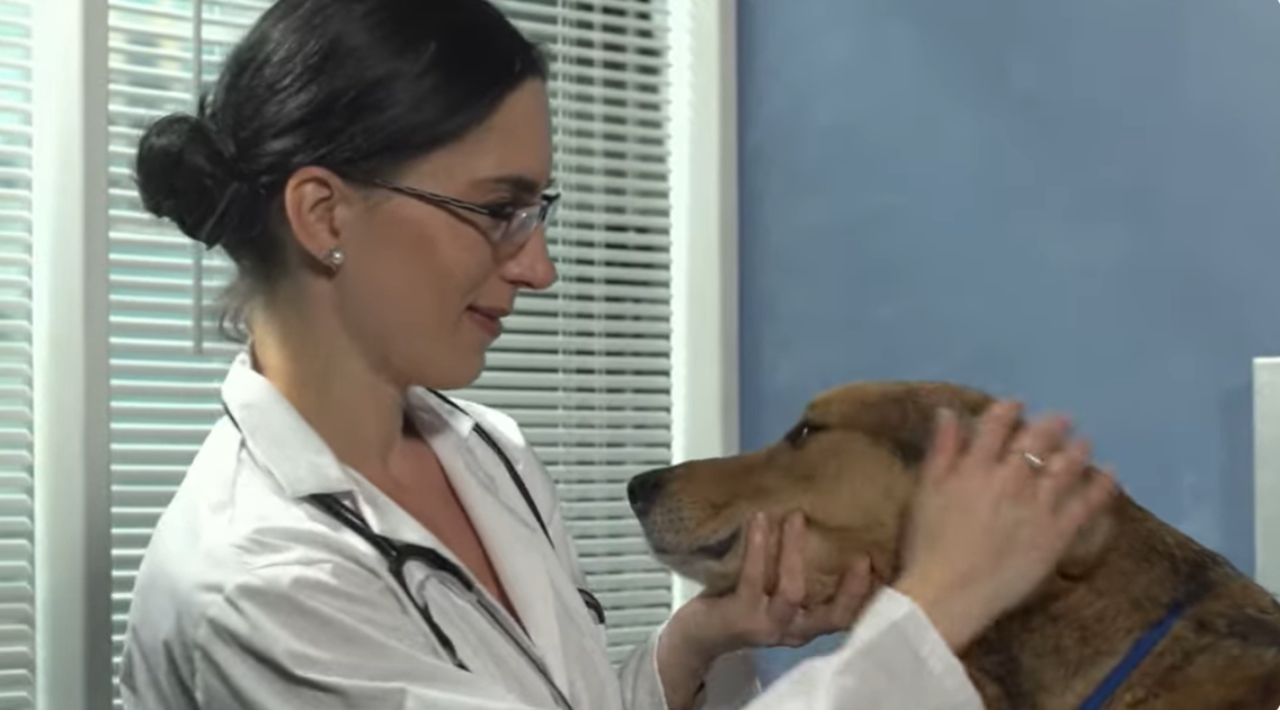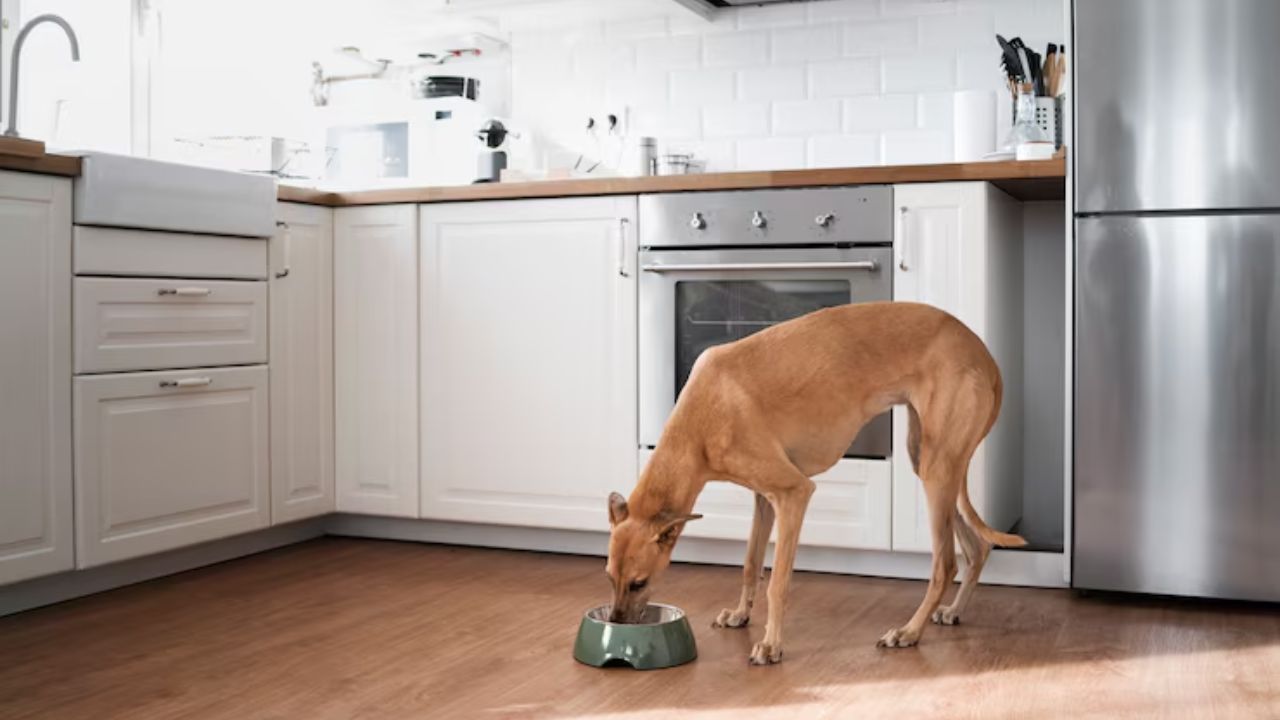How Long Can Dogs Go Without Food? Amazing Facts!

How Long Can Dogs Go Without Food? Dogs can usually survive without food for about 3 to 5 days, but this isn’t ideal for their health.
Understanding how long dogs can go without food is crucial for every pet owner. Sometimes, dogs refuse food due to stress, illness, or changes in their environment. It’s important to identify these reasons and address them promptly. Skipping meals might seem harmless, but it can lead to serious health issues.
Knowing when to worry can make a big difference in your dog’s well-being. This guide will help you understand the factors affecting a dog’s eating habits and explain how long a dog can safely go without eating. We’ll also discuss when to consult a vet. Keeping your furry friend healthy and happy should always be a top priority. So, let’s explore what to do when your dog refuses to eat.
Factors Affecting Food Intake
Understanding how long dogs can go without food is crucial for pet owners. Dogs, like humans, have varying dietary needs. These needs depend on several factors. Some of these include age, size, health, and activity levels. Knowing these factors helps in ensuring a balanced diet. It also aids in identifying any problems early. Factors affecting food intake play a significant role. This ensures your dog stays healthy and happy.
Age And Size
Age and size are key in determining a dog’s food needs. Younger dogs, especially puppies, require frequent meals. They are growing and need more nutrients. Puppies can eat three to four times a day. Larger breeds, like Great Danes, need more calories. They have a higher metabolism compared to smaller breeds.
Older dogs, on the other hand, have different needs. They usually eat less as they age. Their metabolism slows down, and they are less active. This means they need fewer calories. Small breeds, like Chihuahuas, need less food than larger ones. Their bodies burn calories at a different rate.
Here’s a simple table for clarity:
| Age/Size | Number of Meals |
|---|---|
| Puppies | 3-4 times a day |
| Large Breeds | 2-3 times a day |
| Small Breeds | 2-3 times a day |
| Senior Dogs | 1-2 times a day |
Health Conditions
Health conditions significantly impact a dog’s eating habits. Dogs with chronic illnesses might eat less. This includes conditions like diabetes or kidney disease. They often require special diets. Such diets are tailored to their specific needs.
Dental issues can also affect food intake. A dog with sore teeth might avoid eating. This leads to weight loss and other health problems. Regular vet check-ups can help catch these issues early.
Digestive problems can cause a dog to eat less. Issues like upset stomachs or food allergies are common. Always consult a vet if your dog stops eating. Early detection is key to managing health conditions.
Activity Level
Activity level directly affects a dog’s food requirements. Active dogs burn more calories. They need more food to maintain energy. Working dogs or those that exercise a lot fall into this category.
Less active dogs need fewer calories. Overfeeding them can lead to obesity. This is a common problem in less active breeds. Monitoring your dog’s weight is crucial. Adjust their diet based on activity levels.
Signs of underfeeding include weight loss and lethargy. Signs of overfeeding include weight gain and laziness. Both can lead to health problems. Ensure a balanced diet to keep your dog healthy.
Signs Of Hunger
Understanding how long dogs can go without food is crucial for their health. Dogs, like humans, can feel hunger and express it in various ways. Recognizing the signs of hunger is important to ensure they remain healthy and energetic. This article will help you identify these signs, focusing on behavioral changes and physical symptoms that indicate your dog might be hungry. Knowing these signs can assist in providing the right care and attention to your furry friend.

Behavioral Changes
Dogs exhibit several behavioral changes when they’re hungry. These changes can be subtle or quite obvious. Some dogs become more restless and may pace around the house. Others might whine or bark more than usual. Pay attention to these cues.
- Increased aggression: A hungry dog might show aggression towards other animals or people.
- Seeking food: Dogs may search the house for food, sniffing around more than usual.
- Begging behavior: Your dog might sit by the dining table or kitchen, hoping to get some food.
Some dogs might start licking their lips or chewing on objects. These are signs that they’re feeling hungry. Knowing these behaviors helps ensure your dog gets food when needed.
Physical Symptoms
Physical symptoms of hunger in dogs are important to notice. A hungry dog might have a sunken stomach. Their ribs may become more visible. Physical changes can be a strong indicator that your dog needs food.
| Symptom | Description |
|---|---|
| Weight loss | A noticeable drop in weight can indicate hunger. |
| Low energy | Your dog might show signs of fatigue and less interest in activities. |
Other symptoms include dry fur and a lackluster coat. If you notice these signs, it’s essential to provide your dog with proper nutrition. Understanding these symptoms can help keep your dog healthy and happy.
Short-term Fasting
Understanding how long dogs can go without food is crucial for pet owners. Short-term fasting can occur due to various reasons. Illness, stress, or a change in environment might cause a dog to skip meals. It’s important to know the limits of fasting to ensure the well-being of your furry friend. While dogs can survive without food for a short period, prolonged fasting can lead to serious health issues. This post explores the typical duration of fasting and the potential risks involved.
Typical Duration
Dogs can typically fast for a short period without severe consequences. Healthy adult dogs can go without food for about 24 to 48 hours. During this time, their bodies use stored energy to function. Puppies, senior dogs, and dogs with medical conditions may not tolerate fasting well. They require food more frequently to maintain their health.
Factors influencing fasting duration include:
- Age: Younger dogs need more frequent meals.
- Health: Sick dogs may need regular feeding.
- Weight: Overweight dogs can fast longer than underweight ones.
- Breed: Some breeds have different energy needs.
While fasting is sometimes natural, it’s essential to monitor your dog closely. If a dog refuses food for more than 48 hours, consult a veterinarian. Prolonged fasting can lead to dehydration and other health complications.
Potential Risks
Fasting can pose several risks to dogs if not monitored carefully. Dehydration is a primary concern during fasting periods. Dogs need water even if they aren’t eating. Ensure they have access to fresh water at all times. Lack of food can lead to low energy levels. Dogs may become lethargic or weak, affecting their daily activities.
Other risks include:
- Nutrient deficiency: Prolonged fasting can lead to missing essential nutrients.
- Weight loss: Rapid weight loss can be harmful, especially for smaller breeds.
- Organ damage: Extended fasting may impact vital organs like the liver and kidneys.
It’s crucial to recognize signs of distress in your dog during fasting. These include vomiting, diarrhea, or unusual behavior. If any of these symptoms appear, seek veterinary advice immediately. Keeping a close eye on your dog ensures their safety and health during fasting periods.
Long-term Fasting
Understanding how long dogs can go without food is crucial for pet owners. Dogs may experience long-term fasting due to various reasons, like illness or behavioral issues. Long-term fasting can affect a dog’s health significantly. Knowing the limits can help in making informed decisions about their care and well-being.
Consequences On Health
Fasting can impact a dog’s health in several ways. Lack of nutrition affects both physical and mental health. Here are some potential consequences:
- Weight Loss: Dogs may lose muscle mass and strength.
- Weakness: Energy levels drop, making them lethargic.
- Digestive Issues: Stomach problems can arise from not eating.
- Immune System: Lack of nutrients weakens the immune response.
A prolonged lack of food affects their organs. Here’s a quick look at potential organ issues:
| Organ | Effect |
|---|---|
| Liver | Reduced function and toxin buildup |
| Kidneys | Difficulty in filtering waste |
| Heart | Weakened muscles lead to poor circulation |
Critical Timeframes
Timeframes for fasting vary among different dogs. A healthy adult dog can survive without food for about 3 to 5 days. This depends on factors like age, size, and health.
Puppies and older dogs are more vulnerable. Puppies need food every few hours. Their small bodies do not store energy well. Older dogs might have health issues that require regular feeding.
Signs of trouble often appear after 24 hours without food. Look for signs like vomiting, diarrhea, or extreme lethargy. In such cases, it is important to consult a vet.
- 1 to 2 Days: Monitor for mild weakness.
- 3 to 5 Days: Serious health risks emerge.
- Beyond 5 Days: Critical condition, seek medical help.
Immediate action is needed if your dog shows severe symptoms. Ensuring your dog eats regularly prevents these risks.

Emergency Situations
Dogs are known for their resilience, but prolonged periods without food can be dangerous. Understanding how long dogs can survive without eating is crucial, especially in emergencies. Knowing the signs of distress and when to act can save your pet’s life. This article focuses on what to do when your dog hasn’t eaten and how to provide first aid until professional help arrives.
When To Seek Help
Sometimes dogs refuse food for various reasons. Stress, illness, or changes in the environment can affect their appetite. Observing your dog’s behavior is important. Look for these signs:
- Weakness or lethargy
- Vomiting or diarrhea
- Excessive thirst
- Noticeable weight loss
It may be time to seek help if any of these symptoms appear. A vet can determine the underlying cause and provide necessary treatment. Remember, timely intervention can prevent serious health issues.
Consider these factors when deciding to seek help:
| Factor | Details |
|---|---|
| Age | Puppies and older dogs need more attention. |
| Health History | Past health issues may require urgent care. |
| Duration | More than 24 hours without food is concerning. |
First Aid Tips
Providing first aid can help stabilize your dog until you reach the vet. Hydration is crucial; offer small amounts of water frequently. Avoid giving human food as it might worsen the condition. Instead, try these steps:
- Prepare a bland diet like boiled chicken and rice.
- Serve small portions to prevent vomiting.
- Keep the dog calm and comfortable.
Monitor your dog closely during this time. Watch for changes in behavior or improvement. Keep a record of food and water intake. This helps the vet assess the situation better. Remember, your quick action can make a difference in your dog’s recovery.
Reintroducing Food
Dogs, like humans, need food to survive. But there are times when they might not eat. Illness, stress, or a change in environment can cause this. Understanding how long dogs can go without food is important. It helps us know when to worry and take action. Reintroducing food is also crucial. It ensures dogs get back to their normal eating habits safely.
Gradual Process
When reintroducing food to a dog, a gradual process is essential. Sudden changes can upset their stomach. To start, offer small amounts of food. Observe how they react. If they eat well, gradually increase the portion sizes. This helps their digestive system adjust.
Consider these steps:
- Start with a small portion of food.
- Monitor their reaction and appetite.
- Slowly increase the food amount over a few days.
- Ensure they have access to fresh water.
If the dog refuses to eat, patience is key. Try feeding at different times or in a quiet space. This can make them feel more comfortable. If the issue persists, consulting a vet is wise. A professional can rule out any health problems.
What To Feed
Choosing the right food is crucial when reintroducing meals. Start with bland and easy-to-digest foods. Boiled chicken and rice are common choices. These foods are gentle on the stomach and provide necessary nutrients.
Here are some options:
- Boiled chicken without skin
- Plain rice
- Low-sodium chicken broth
- Canned pumpkin (not pie filling)
Avoid rich or spicy foods. They can upset the stomach further. Gradually mix these bland foods with their regular diet. This helps transition them back to their usual meals.
Table of suitable foods:
| Food | Benefits |
|---|---|
| Boiled Chicken | High in protein, gentle on the stomach |
| Plain Rice | Easy to digest, provides energy |
| Chicken Broth | Hydrating, adds flavor |
| Canned Pumpkin | Fiber-rich, aids digestion |
Always ensure the food is fresh and safe. If unsure, consult a vet for advice.
Preventing Food Refusal
Dogs are often seen as companions who rely on us for care and nourishment. Understanding how long they can go without food is important for their health. Preventing food refusal is key to ensuring that your furry friend stays healthy and happy. Dogs might refuse food for various reasons, including stress or illness. In this guide, we will explore ways to prevent food refusal and ensure they get the nutrition they need.
Regular Feeding Schedule
A consistent feeding schedule is vital for your dog’s health. Dogs thrive on routine, and feeding them at the same time each day helps regulate their metabolism. It also helps in establishing a sense of security and normalcy. Here’s how a regular schedule benefits your dog:
- Predictability reduces stress and anxiety.
- Encourages regular bowel movements, promoting digestive health.
- Helps manage weight by controlling portion sizes.
Creating a feeding schedule requires attention to their age, breed, and activity level. Puppies need frequent meals, while adult dogs do well with two meals a day. Always ensure fresh water is available. Monitor their weight and adjust portions accordingly. Consistency is key to preventing food refusal and maintaining a healthy lifestyle.

Diet Variation
Providing a varied diet can prevent food refusal. Dogs, like humans, enjoy a change in flavor and texture. A varied diet ensures they receive all essential nutrients. Here are some tips for diet variation:
- Incorporate different protein sources like chicken, beef, or fish.
- Mix wet and dry food to enhance texture.
- Include fruits and vegetables for vitamins and minerals.
Be cautious with sudden changes. Gradually introduce new foods to avoid upset stomachs. Observe their reaction to new items and adjust accordingly. A balanced and varied diet keeps them engaged and prevents refusal. Make mealtime exciting and nutritious, ensuring they look forward to their meals.
Frequently Asked Questions: How Long Can Dogs Go Without Food?
How Long Is Too Long For A Dog To Not Eat?
A dog should not go more than 24 hours without eating. If your dog refuses food, consult a vet promptly. Puppies and sick dogs need urgent attention if they skip a meal. Regular eating is crucial for maintaining their health and energy.
What Happens When A Dog Doesn’t Eat For 3 Days?
A dog not eating for 3 days can indicate illness or stress. Seek veterinary advice promptly. Prolonged fasting may lead to dehydration, weakness, and organ damage. Ensure the dog has access to water and monitor other symptoms like vomiting or lethargy. Early intervention can prevent serious health issues.
How Long Can A Dog Safely Go Without Food?
Dogs can safely go without food for about 3-5 days. Ensure they have access to water. If a dog refuses food for over 48 hours, consult a veterinarian. Extended fasting can lead to health issues. Always monitor your dog’s behavior and health during fasting periods.
Will A Dog Eventually Eat If Hungry?
Yes, dogs will eat when hungry. Their instincts drive them to consume food for energy. If a dog refuses to eat, it could be due to illness or stress. Ensuring a balanced diet and a comfortable environment encourages regular eating habits. Consult a vet if eating issues persist.
How Many Days Can Dogs Survive Without Food?
Dogs can survive 3 to 5 days without food. But it’s risky. Always consult a vet.
Conclusion
Understanding how long dogs can go without food is vital. Dogs can survive a few days without eating. But it’s not ideal. Always ensure your dog has access to food and water. Pay attention to any changes in eating habits.
This can signal health issues. Visit a vet if your dog refuses food for a day or more. Remember, a well-fed dog is a healthy dog. Prioritize their nutrition and well-being. Your furry friend’s health depends on it. Keep them happy and healthy with regular meals.







